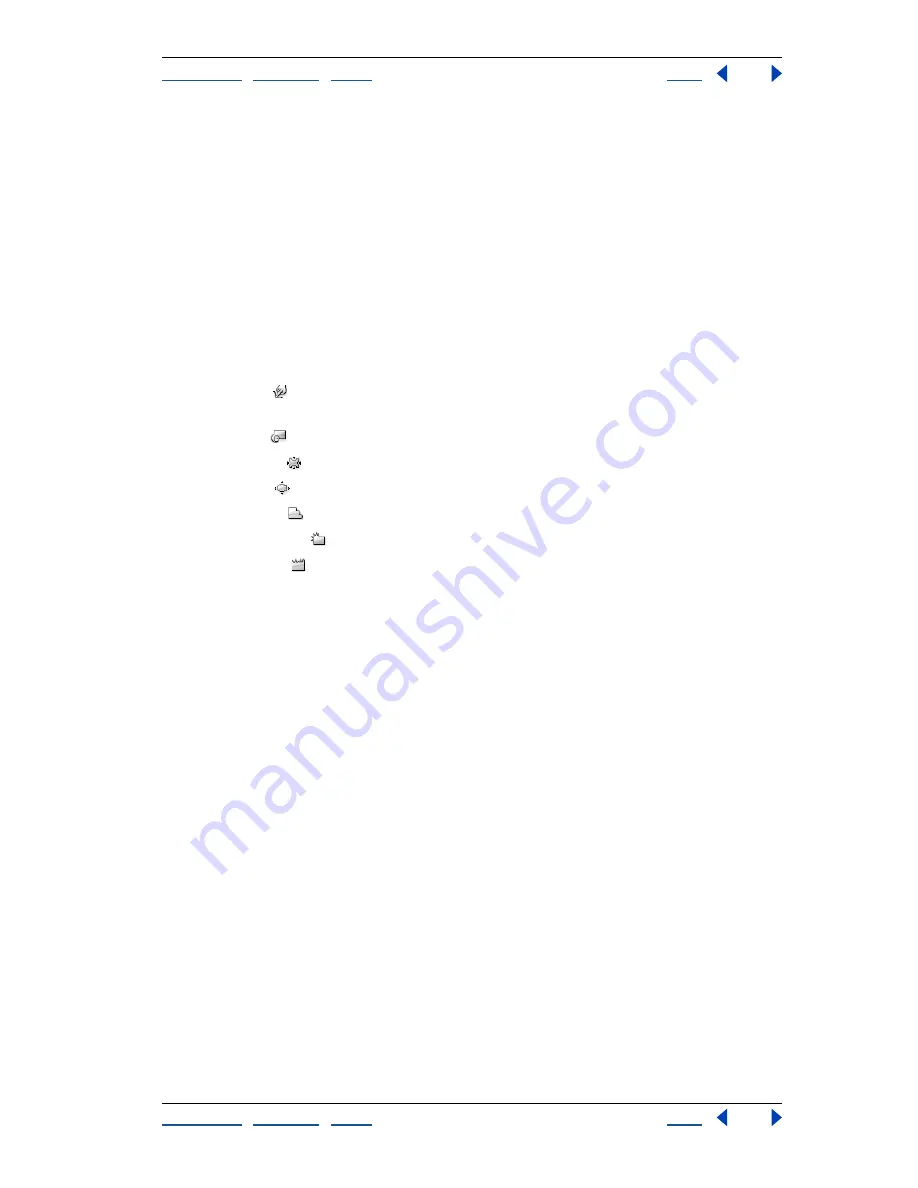
Using Help
|
Contents
|
Index
Back
125
Adobe Illustrator Help
Transforming and Distorting Shapes
Using Help
|
Contents
|
Index
Back
125
7
Click OK.
Note:
If you expand the envelope with a Distort option selected, the respective property is
expanded separately.
Modifying shapes with liquify tools
Illustrator provides a variety of liquify tools for changing an object’s shape. Using these
tools alters the original object’s shape. To distort objects with liquify tools, simply hold
down the mouse and draw over the object with the tool—the tool adds anchor points and
adjust paths as you draw.
Note:
You cannot use liquify tools on objects that contain text, graphs, or symbols.
Use any of the following tools to distort an object:
The warp tool
Stretches objects as if they were made of clay. When you drag or pull
portions of an object using this tool, the pulled areas attenuate.
The twirl tool
Creates swirling distortions of an object.
The pucker tool
Deflates an object by moving control points toward the cursor.
The bloat tool
Inflates an object by moving control points away from the cursor.
The scallop tool
Adds random, smooth, arc-shaped details to the outline of an object.
The crystallize tool
Adds random spike, arc-shaped details to the outline of an object.
The wrinkle tool
Adds random arc and spike-shaped details to the outline of an
object.
To distort an object using a liquify tool:
1
Select the liquify tool in the toolbox.
2
Click or drag over the object you want to distort.
To specify liquify tool options:
1
Double-click the tool in the toolbox.
2
In the Options dialog box, specify the following Global Brush Dimensions settings:
•
For Width and Height, enter values for the size of the tool cursor.
•
For Angle, enter a value for the orientation of the tool cursor.
•
For Intensity, enter a value to specify the rate of change (higher values equal faster
changes), or select Use Pressure Pen to use the input from a tablet or pen instead of the
Intensity value.
Note:
If you don’t have a pressure pen attached, the Use Pressure Pen option is dimmed.
3
Specify values for any of the following options that apply:
•
For Complexity, enter a value to specify how closely the details of the particular brush
are spaced on the object’s outline. This is closely tied with the Detail value.
•
For Detail, enter a value to specify the spacing between points introduced into the
object’s outline (higher values space points closer together).
•
For Simplify, enter a value to specify how much you want to reduce the superfluous
points that do not measurably affect the overall appearance of the shape.






























